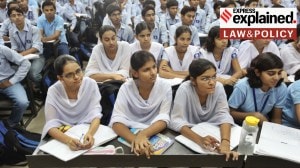Forwards the only way ahead
When Spain beat ultra-defensive South Africa 2-1 in pool A here today, they did more than earn full points for themselves: they gave India a...

When Spain beat ultra-defensive South Africa 2-1 in pool A here today, they did more than earn full points for themselves: they gave India an idea of what to do tomorrow against Malaysia, who play a robust, defensive game. The focus of discussion here today was on how the stronger teams handle the pressure from those that lack exposure but are eager to make a mark. India failed abysmally in that task yesterday, held 1-1 by Belgium.
By contrast Spain, the 1996 Olympics silver medallists, faced stiff resistance from the South Africans today but their team, under Dutch coach Maurits Hendriks, maintained heavy pressure on the minnows, changing tactics when required and not giving up till the end. Not surprising, then, that they scored the winner in the final seconds of the match.
To effect a turnaround, India need better service for their forwards — the platform for India’s recent successes — and the think-tank, which didn’t come up with a strategy to counter the Belgium defence. Indeed, India’s attacking play was conspicuous by its absence.
Data on the Belgium match available with the FIH tells the story:
• India had just four field goal chances, compared to Belgium’s three (one converted)
• India converted just one out of 8 penalty corners
• Compared to India’s 8 per cent overall conversion rate, Spain had a 46 per cent success rate in yesterday’s match against Japan
• The Pakistanis scored four times from 10 chances against Canada
What surprises experts is that the match was played on an equal level. Ric Charlesworth, who specialises in high-performance coaching, said that Belgium looked sharper in attack and had more chances. ‘‘It’s shocking but the Indians actually had fewer chances than the Belgians’’, he told this paper.
In the past year and a half, the Indian team has won only if their forwards have scored — the PC conversion rate has supplemented the overall tally of goals they had scored against other teams. Given that there’s currently no quality PC expert, there’s additional pressure on the forwards And of course the P factor. Dhanraj Pillay’s absence robs the team of a striker and playmaker, and there are few alternatives in the 18-member squad.
Interestingly, the Indians played with six midfielders in the match — including substitutes — but penalty-corner specialist Len Ayyappa, their weakest link in this position because of his slow movement, spent more time on the pitch than the others. Again it is difficult to understand why Rajinder Singh did not use the rolling substitution for the forwards, who appeared out of focus for much of the second half.
‘‘They seemed to be only substituting the midfielders but if you are looking for goals then you have to concentrate on the forwards’’, said Charlesworth. ‘‘The strikers are the ones who are running in the front of the goalpost all the time and it is a tiring job. They could have been rested in between to come back fresh.’’
The pressure will only increase on the forwards; if India don’t win their remaining matches, they may be out of the semifinals. They will then play the classification matches against teams from the other pool — Great Britain and Poland — who have always troubled the Indians.
Photos





- 01
- 02
- 03
- 04
- 05

























